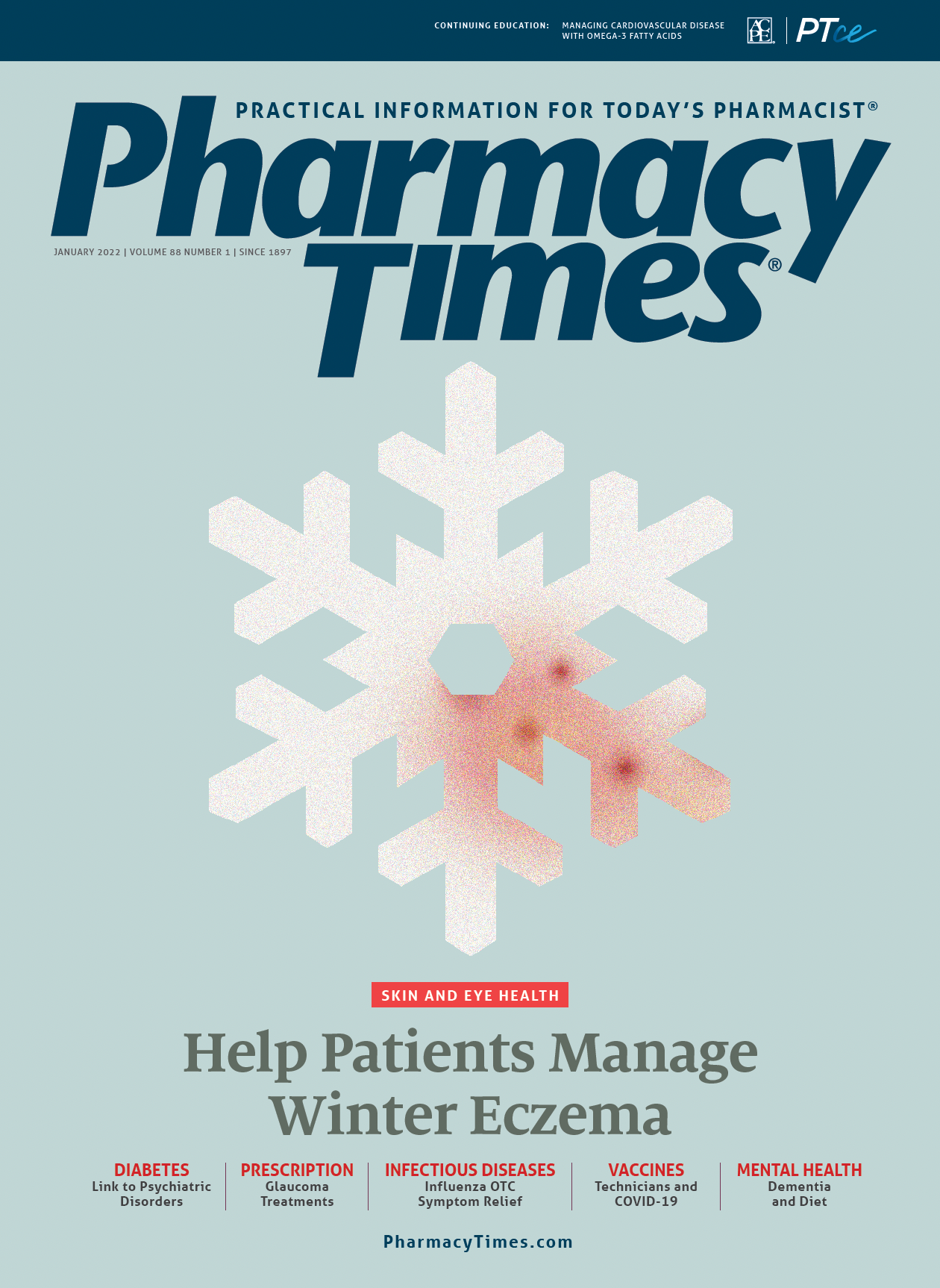Publication
Article
Pharmacy Times
Interactive Case Studies: January 2022
Author(s):
How would you respond to these patients' questions?
Case 1: PJ, a nurse practitioner aged 44 years, asks whether she should get the Moderna booster dose for COVID-19. She has had a significant allergic reaction to MiraLAX (polyethylene glycol [PEG] 3350) consisting of hives and hypotension. PJ has already received the first 2 doses of the Moderna vaccine without incident. Since she learned that messenger RNA (mRNA) vaccines contain PEG, she has wondered whether she should be concerned about getting the Moderna booster or whether she should get a booster from a different manufacturer.
How should the pharmacist respond?
A. mRNA COVID-19 vaccines contain PEG 2000.1 This ingredient is thought to cause severe allergic reactions, including anaphylaxis. There may be some concerns about cross-reactivity of PEG. However, limited information is available concerning cross-reactivity between PEG 2000 and PEG 3350. Because PJ received the first 2 doses with no issues, it would be appropriate to recommend administering the booster dose. CDC guidelines recommend 30-minute monitoring if there is a history of an immediate allergic reaction to an injectable therapy or vaccine or a history of anaphylaxis related to any cause.2 Although her previous allergic reaction to MiraLAX does not classify as
a reaction to an injectable therapy, it would be appropriate to recommend that she receive the booster dose but with 30-minute monitoring as a precaution. Alternatively, PJ can opt to receive the Johnson & Johnson booster, which does not contain PEG.3
References
1. Lauritano D, Martinelli M, Baj A, et al. Drug-induced gingival hyperplasia: an in vitro study using amlodipine and human gingival fibroblasts. Int J Immunopathol Pharmacol. 2019;33:2058738419827746. doi:10.1177/2058738419827746
2. Whelton PK, Carey RM, Aronow WS, et al. 2017 ACC/AHA/AAPA/ABC/ACPM/AGS/APhA/ASH/ASPC/NMA/PCNA guideline for the prevention, detection, evaluation, and management of high blood pressure in adults: a report of the American College of Cardiology/American Heart Association Task Force on Clinical Practice Guidelines. Hypertension. 2018;71(6):e13-e115. doi:10.1161/HYP.0000000000000065
3. Williams B, MacDonald TM, Morant S, et al; British Hypertension Society’s PATHWAY Studies Group. Spironolactone versus placebo, bisoprolol, and doxazosin to determine the optimal treatment for drug-resistant hypertension (PATHWAY-2): a randomised, double-blind, crossover trial. Lancet. 2015;386(10008):2059-2068. doi:10.1016/S0140-6736(15)00257-3
Case 2: A clinical pharmacist working for an integrated health care network is told by an advanced practice registered nurse (APRN) about her patient, RT, a Black woman aged 58 years with uncontrolled hypertension. RT takes chlorthalidone 25 mg, losartan 100 mg, and metoprolol succinate 200 mg. Despite proper adherence, she has consistently elevated blood pressure (BP), averaging 158/84 mm Hg. Other laboratory results and vitals are unremarkable. The APRN is interested in starting nifedipine because she knows calcium channel blockers (CCBs) are recommended for Black patients. However, the APRN says that in the past RT had gingival hyperplasia on amlodipine and stopped taking it. The APRN wants to know whether nifedipine would carry the same risk and, if so, what other treatment options are suitable for RT.
How should the pharmacist respond?
A. All CCBs have been associated with gingival enlargement. The mechanism is poorly understood but is thought to involve collagen accumulation, fibroblasts, and proinflammatory cytokines. Gingival overgrowth usually manifests within 1 to 3 months after CCB initiation.1 Because nifedipine is the most frequently implicated CCB in drug- induced gingival hyperplasia, the pharmacist should advise against its use for RT. The best approach to manage her resistant hypertension is to screen for secondary causes, such as drug-induced hypertension, obstructive sleep apnea, primary hyperaldosteronism, renal parenchymal disease, and renovascular disease.2 Adding an aldosterone antagonist such as spironolactone would be advisable, assuming there are no contraindications. Findings from the PATHWAY-2 study show that spironolactone is superior to bisoprolol, doxazosin, and a placebo for lowering BP in resistant hypertension.3
References
1. Sellaturay P, Nasser S, Islam S, Gurugama P, Ewan PW. Polyethylene glycol (PEG) is a cause of anaphylaxis to the Pfizer/BioNTech mRNA COVID‐19 vaccine. Clin Exp Allergy. 2021;51(6):861-863. doi:10.1111/cea.13874
2. Moderna COVID-19 vaccine. CDC. Updated December 1, 2021. Accessed December 13, 2021. https://www.cdc.gov/vaccines/covid-19/info-by-product/moderna/index.html[RP2]
3. COVID-19 vaccines for people with allergies. CDC. Updated December 14, 2021. Accessed December 14, 2021. https://www.cdc.gov/coronavirus/2019-ncov/vaccines/recommendations/specific-groups/allergies.html [RP3]
Stephanie Ryzyk and Syuleyman Betashev are PharmD candidates at the University of Connecticut School of Pharmacy in Storrs.
Stephanie C. Nigro, PharmD, BCACP, CDCES, is an associate clinical professor at the University of Connecticut School of Pharmacy in Storrs.

Newsletter
Stay informed on drug updates, treatment guidelines, and pharmacy practice trends—subscribe to Pharmacy Times for weekly clinical insights.





